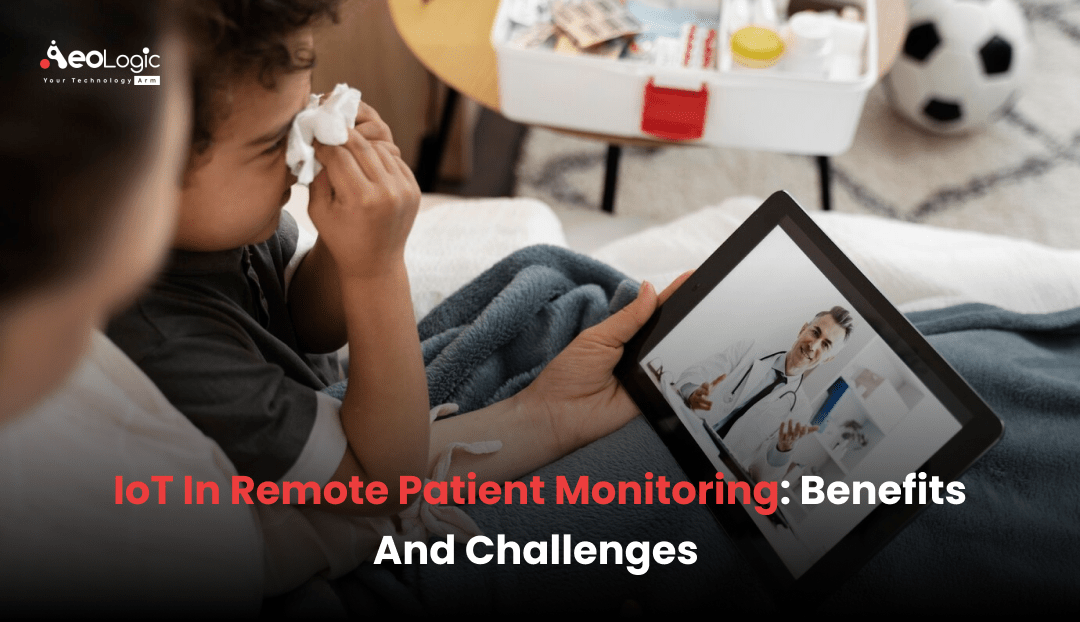The healthcare industry works on patient treatment as it is a very important industry for mankind. Proper treatment equipment and procedures need to be followed to treat a patient. Not availability of proper treatment facilities can cause risk factors for the patients. Many healthcare organizations do not have proper treatment facilities which costs patients lives. Statistics show that due to poor quality healthcare, around five million people die every year due to inadequate healthcare, according to a new analysis published in The Lancet.
Five million is not a normal number of deaths as it is a serious concern. There are mainly two things that need to be done in the healthcare industry that can enhance this industry. This is very necessary to make available treatment facilities to every healthcare organization. Many developed nations have also introduced technology to the healthcare industry to provide better treatment to patients. The Internet of Things is one of the leading technologies in the healthcare industry that has been contributing to better treatment providence for patients. The ability to sense and detect IoT is very vulnerable to the healthcare industry. Remote monitoring is the thing to which IoT is contributing very efficiently. The stats also show the healthcare IoT market worldwide is projected to reach a revenue of US$108.60bn by 2024. It is expected to show an annual growth rate (CAGR 2024-2028) of 11.47%, leading to a market volume of US$167.70bn by 2028.
Remote monitoring of patients can be one of the best IoT solutions in the healthcare industry and today we will talk briefly on this topic. We will see the benefits, challenges, and other important aspects of IoT in remote monitoring of patients.
What is IoT in Remote Patient Monitoring?

IoT or Internet of Things refers to the technology that is a collective network of connected devices, used to communicate among devices. Simply, a subset of telehealth known as “remote patient monitoring” makes use of digital technology to make it easier to gather, send, assess, and communicate patient health data via electronic devices such as wearable sensors, implanted devices, and handheld tools. Since remote monitoring involves sensing, detecting, and gathering information it can play an important role as it possesses all these qualities.
Also Read: Exploring The Role Of IoT In Smart Mobility Solutions
Why is IoT Important in Patient Remote Monitoring?
With the conventional method of treating patients, it is not easy to get data about every bit of patients’ conditions that delay the treatment and also affect the treatment process. There are a lot of patients within a healthcare organization and doctors do not have enough time to collect every patient’s data, and diagnosis, and make instant decisions. When patients are not in hospitals, then it is not possible to track their condition at home. There are a lot of problems related to patent condition monitoring that cannot be solved easily. To solve these problems, IoT needs to fully evolve around the world in every healthcare organization.
Features of IoT in Terms of Patient Monitoring
IoT possesses a lot of features that can be very crucial in remote patient monitoring. Here are a few key features mentioned below.
Real-Time Data
IoT can provide real-time data as this ability can be very important in remote patient monitoring. Doctors can get real-time data of patients while diagnosis which saves time and provides treatment to patients as soon as possible.
Sensing
Sensing is another feature of IoT as it enables sensing of diseases in patients, sensing their conditions, etc. This provides real-time accurate data as IOT-based sensing devices are attached to the patient’s body.
Integration
Integration is one of the most important abilities of IoT as it can integrate with other technologies easily. IoT with the integration of AI can enhance security as AI can add an extra layer of security. IoT detects the threat and AI can prevent the risk factor. This saves healthcare organizations’ and patients data from going into the wrong hands.
Benefits of IoT in Remote Patient Monitoring
Above mentioned abilities are very impressive as they can offer a lot of benefits in the remote monitoring of patients. Here are a few important benefits mentioned below.
Wearable Devices
As mentioned earlier, IoT can sense and detect and this could be a very important factor. With these abilities, wearable devices have been developed that patients can wear on their hands, neck, etc. This enables the monitoring of patients when they are outside the healthcare organization and collects data about every condition like heart rate, pulse rate, calories burned, Blood pressure, temperature, etc.
Appointment via Home
IoT lets patients book appointments via home which can be the best thing for long-distance patients. This reduces the long lines for appointments and saves valuable time for patients and doctors too.
Diagnosis via Home
Doctors can make a diagnosis of a patient’s condition online through video calls. They can ask questions about the patient’s condition and if the patient is wearing an IOT-based wearable device then it makes it easier for doctors to remote diagnosis with the availability of proper data.
Also read: The Power of IoT in Retail to Optimize Your Business
Challenges of Remote Patient Monitoring with IoT
We have seen a few benefits of IoT in remote patient monitoring. Now it’s time to know about some challenges too. Here are a few mentioned below.
- Accuracy can drop when it’s a matter of handling vast amounts of data in the healthcare industry that partially affects the patient’s remote monitoring and treatment. So this can be a challenge.
- The biggest challenge with IoT is privacy because data is transferred instantly between all linked devices. If there is an insecure end-to-end connection, personal data may be compromised.
- Technical errors in wearable devices can lead to risk for patients. Wrong data leads to wrong treatment that costs the lives of patients or serious conditions. So this could be a serious concern.
Also Read: Top IoT Security Challenges and Solutions
Final Words
You can more effectively monitor or manage an acute or chronic medical condition over time from a distance with an IOT-based remote patient monitoring system. RPM is commonly understood to be the process of gathering and transmitting physiologic data from patients’ homes or other locations, followed by patient treatment based on the transmitted data. Many IoT-based healthcare devices enhance remote monitoring and collect real-time data of patients anytime, anywhere. There is a survey that shows that more than 23 million patients were already using remote patient monitoring tools and services in 2020. Furthermore, this number is expected to rise, with more than 30 million people expected to use these same tools and services by 2024. This data shows the success of IoT in remote monitoring by which the healthcare industry is moving towards a better future.
Aеologic Tеchnologiеs stands out as a lеading providеr in thе rеalm of IoT solutions an’ particularly forеnhancin’ in thе healthcare industry.










